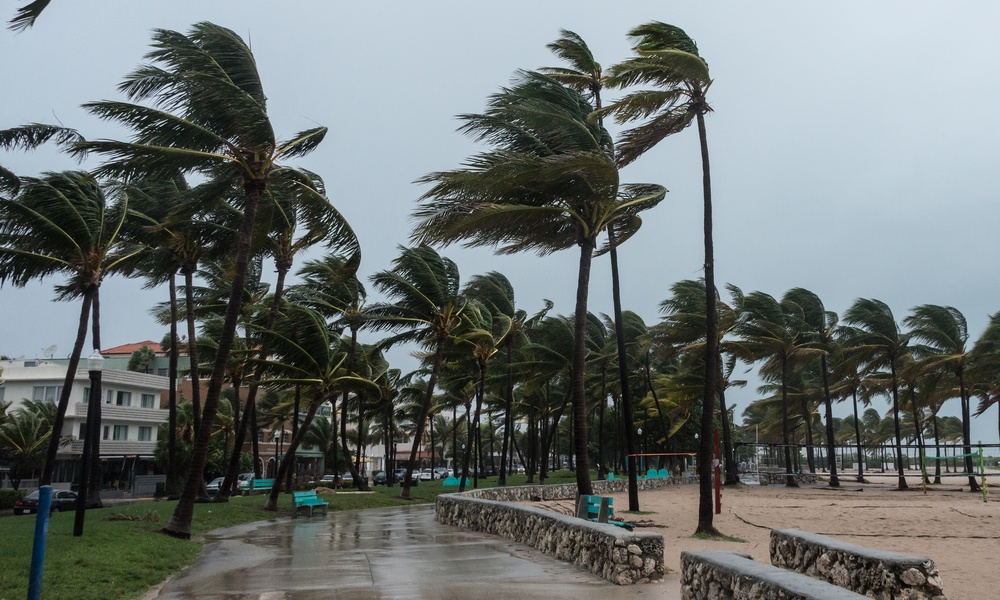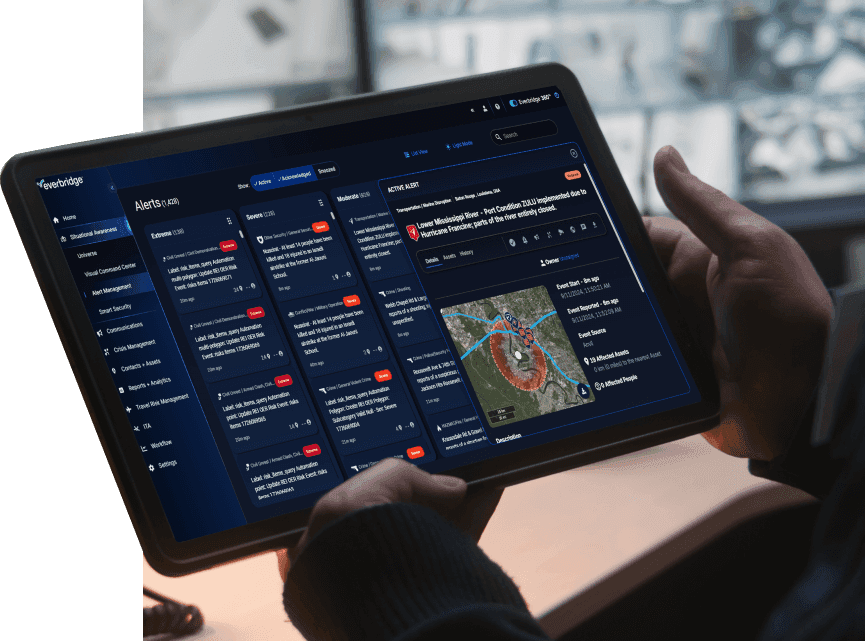Weather events continue to pose significant challenges to employees and businesses alike. By 2024, the United States had experienced 27 separate billion-dollar weather and climate disasters, with total losses reaching $182.7 billion, according to the NOAA National Centers for Environmental Information.
This marks continued upward trends, with an average of 23 such events annually over the past five years. These disasters included severe storms, tropical cyclones, wildfires, winter storms, and droughts, illustrating the growing frequency and intensity of extreme weather.
With these patterns showing no signs of slowing, it is critical for organizations to implement a comprehensive inclement weather policy to safeguard employees and maintain operational continuity in the face of increasingly unpredictable conditions.
What is inclement weather?
Inclement weather encompasses a wide range of adverse weather conditions, including hurricanes, wildfires, flooding, heavy rain, tornadoes, snowstorms, hailstorms, heat waves, and ice storms. Each of these weather events poses unique challenges and risks to employee safety and business operations.
Importance of having an inclement weather policy
Given the increasing frequency and severity of inclement weather events, having a comprehensive inclement weather policy is crucial for organizations. While OSHA (Occupational Safety and Health Administration) “does not have a specific standard that covers working in cold environments, employers have a responsibility to provide workers with employment and a place of employment which are free from recognized hazards, including winter weather-related hazards.”
An inclement weather policy addresses the main concerns of employees, ensures maintaining OSHA standards, promotes organizational resilience, and safeguards both safety and productivity.
What to include in an inclement weather policy
Incorporating safety procedures, communication guidelines, and employee rights into an inclement weather policy is essential for ensuring the safety and well-being of employees while maintaining business continuity.
- Safety procedures: Clearly outline safety protocols for various weather events. This includes designated evacuation routes, assembly points, and procedures for securing the premises in anticipation of extreme weather conditions.
- Communication templates and guidelines: Establish clear communication channels and provide templates for communicating with employees before, during, and after inclement weather events. Communication channels should be established in advance, such as email, text messaging, phone calls, or digital signage, to ensure that information reaches all employees in a timely and effective manner.
- Employee rights: Define employee rights regarding pay, flexible working arrangements, and time off during inclement weather events. This includes outlining policies for compensating employees for missed work due to office closures or transportation disruptions caused by severe weather. Additionally, organizations should establish guidelines for flexible working arrangements, such as telecommuting or adjusted work hours, to accommodate employees who may be impacted by inclement weather conditions.
Communication before, during, and after an extreme weather event
Effective communication is essential during inclement weather events to ensure the safety and well-being of employees. Establish a designated communication channel and provide sample email and text message templates for notifying employees of weather-related updates and instructions.
Communication before inclement weather events
Draft a series of pre-configured messages for the most likely weather events that could impact your people. For instance, if your region is prone to tornadoes or flooding, prepare clear instructions such as “Head to the underground shelter immediately!”
Preparation is the best insurance to minimize impact. Conduct emergency preparedness training to ensure your employees know how to react and are equipped with the necessary tools to stay safe.
Part of this plan should include defining the communication tree. Determine who is responsible for publishing content and rehearse this process to avoid any confusion when it’s needed most.
Communication during inclement weather events
When a weather event strikes, employees need up-to-the-minute information from a reliable source they trust. Utilize all available internal communication channels to ensure your message is widespread. Emergency communication channels help coordinate and advise employees during any crisis.
For urgent messages, use channels that ensure immediate visibility. Tools like Alerts and panic button notifications can override other applications, appearing directly on all desktop and mobile screens, bypassing email. Emails are often not timely enough and can be easily missed.
Provide explicit instructions and include links to more detailed information if needed.
Sample email message
Subject Line: Important Update: Inclement Weather Advisory
Dear Team,
Due to the forecasted severe weather conditions, we have decided to implement our inclement weather policy. Please review the attached document for detailed instructions on safety procedures and employee rights. Stay safe and remain indoors until further notice.
Regards,
[Your name, department, and contact information]
Sample Text Message
Inclement Weather Advisory: Due to severe weather conditions, all employees are advised to stay indoors and refrain from traveling until further notice. Updates will be provided as the situation evolves.
Communication after inclement weather events
After the event has passed, review your communication strategy to identify what worked well and what needs improvement. Gather feedback from employees through a survey; you may find that the frequency of communications needs adjusting or that one format is more effective than others.
Most importantly, keep your emergency communication plan up to date. Employees will continue to join and leave the organization; remote offices may open or close; the communications coordinator themselves may move on, taking their knowledge with them.
Urgency is essential when extreme weather events strike. A comprehensive crisis communications plan will help your organization be prepared, minimize risk, and save lives.
How Everbridge can help
In addition, Everbridge provides a variety of tools and solutions for effective communication before, during, and after an inclement weather event.
- Mass Notification: Mass Notification can be used to send alerts and warnings to employees, residents, or other stakeholders, informing them about the impending weather conditions and providing safety instructions. This tool enables organizations to send real-time updates and emergency alerts about the evolving situation, evacuation orders, shelter locations, and other critical information.
- SnapComms: SnapComms is an easy way to disseminate pre-event safety tips, reminders, and preparedness checklists to employees through various channels such as desktop alerts, screensavers, and mobile apps. Companies can ensure that all employees are aware of potential risks and know what steps to take to stay safe. It is also useful for post-event surveys and feedback.
- Travel Protector: Even when employees are traveling, Everbridge helps you keep them safe. With Travel Protector, organizations can send immediate alerts to travelers in affected areas, advising them to take necessary precautions, change travel plans, or seek alternative routes. They can also provide updates on weather-related disruptions, such as flight cancellations, road closures, or transportation delays, to help travelers adjust their itineraries accordingly.
Looking to the future
As inclement weather events continue to pose significant challenges for organizations, it’s essential to weatherproof your organization and prepare for the future. By implementing a comprehensive inclement weather policy and leveraging tools like Everbridge’s solutions for mass notification and incident communications, organizations can enhance their resilience and protect their most valuable asset – their employees.
Developing an effective inclement weather policy is vital for protecting employees and ensuring business continuity during adverse weather events. By addressing safety procedures, communication guidelines, and employee rights, organizations can better prepare for and respond to inclement weather events, ultimately safeguarding both their employees and their business operations.
Watch this panel-led webinar about the challenges posed by climate variability, and learn insights into strategies for resilience and adaptation.

